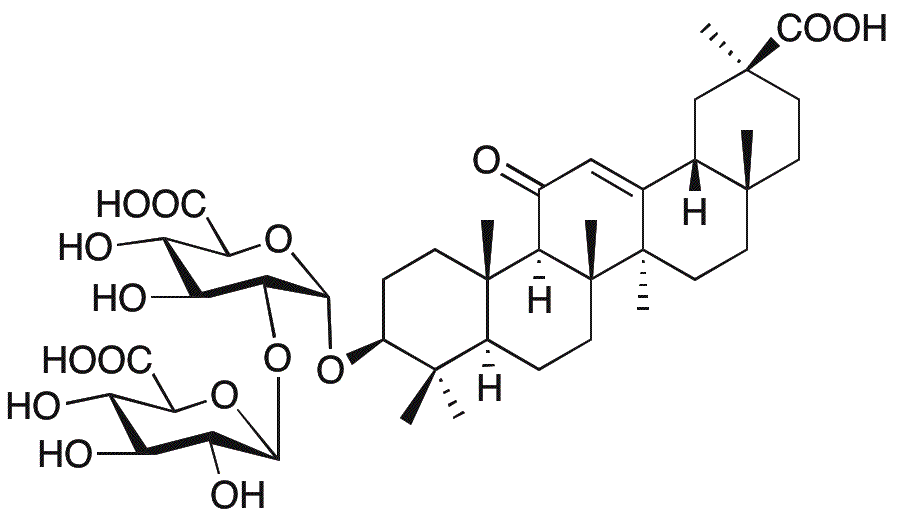Glycyrrhizin is widely utilized in research focused on:
- Pharmaceuticals: Known for its anti-inflammatory and antiviral properties, glycyrrhizin is used in developing treatments for conditions like hepatitis and respiratory infections.
- Food Industry: As a natural sweetener, it is employed in various food products, providing a sugar-like taste without the calories, making it popular in health-conscious formulations.
- Cosmetics: Its soothing and moisturizing effects make glycyrrhizin a key ingredient in skincare products, helping to reduce irritation and improve skin health.
- Herbal Medicine: Commonly found in traditional remedies, it is used for its potential benefits in digestive health and as an adaptogen to help the body manage stress.
- Research Applications: Glycyrrhizin is studied for its potential in cancer research, particularly for its ability to inhibit tumor growth and enhance the efficacy of certain chemotherapy drugs.
General Information
Properties
Safety and Regulations
Applications
Glycyrrhizin is widely utilized in research focused on:
- Pharmaceuticals: Known for its anti-inflammatory and antiviral properties, glycyrrhizin is used in developing treatments for conditions like hepatitis and respiratory infections.
- Food Industry: As a natural sweetener, it is employed in various food products, providing a sugar-like taste without the calories, making it popular in health-conscious formulations.
- Cosmetics: Its soothing and moisturizing effects make glycyrrhizin a key ingredient in skincare products, helping to reduce irritation and improve skin health.
- Herbal Medicine: Commonly found in traditional remedies, it is used for its potential benefits in digestive health and as an adaptogen to help the body manage stress.
- Research Applications: Glycyrrhizin is studied for its potential in cancer research, particularly for its ability to inhibit tumor growth and enhance the efficacy of certain chemotherapy drugs.
Documents
Safety Data Sheets (SDS)
The SDS provides comprehensive safety information on handling, storage, and disposal of the product.
Product Specification (PS)
The PS provides a comprehensive breakdown of the product’s properties, including chemical composition, physical state, purity, and storage requirements. It also details acceptable quality ranges and the product's intended applications.
Certificates of Analysis (COA)
Search for Certificates of Analysis (COA) by entering the products Lot Number. Lot and Batch Numbers can be found on a product’s label following the words ‘Lot’ or ‘Batch’.
*Catalog Number
*Lot Number
Certificates Of Origin (COO)
This COO confirms the country where the product was manufactured, and also details the materials and components used in it and whether it is derived from natural, synthetic, or other specific sources. This certificate may be required for customs, trade, and regulatory compliance.
*Catalog Number
*Lot Number
Safety Data Sheets (SDS)
The SDS provides comprehensive safety information on handling, storage, and disposal of the product.
DownloadProduct Specification (PS)
The PS provides a comprehensive breakdown of the product’s properties, including chemical composition, physical state, purity, and storage requirements. It also details acceptable quality ranges and the product's intended applications.
DownloadCertificates of Analysis (COA)
Search for Certificates of Analysis (COA) by entering the products Lot Number. Lot and Batch Numbers can be found on a product’s label following the words ‘Lot’ or ‘Batch’.
*Catalog Number
*Lot Number
Certificates Of Origin (COO)
This COO confirms the country where the product was manufactured, and also details the materials and components used in it and whether it is derived from natural, synthetic, or other specific sources. This certificate may be required for customs, trade, and regulatory compliance.


